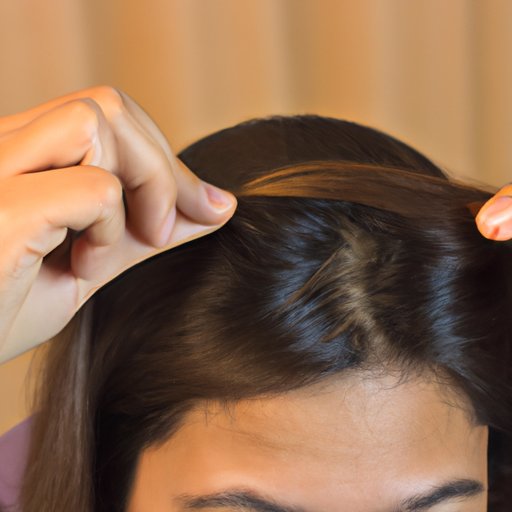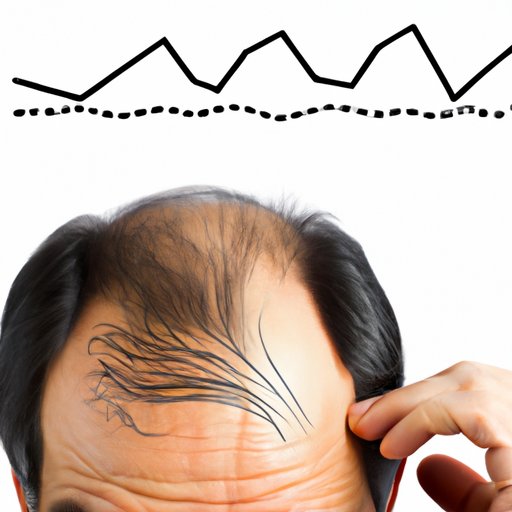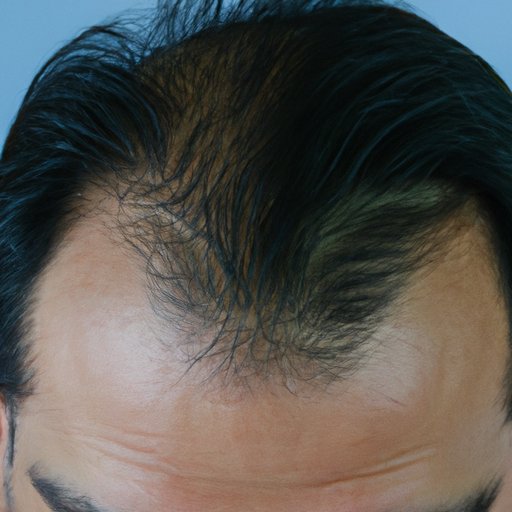Introduction
Balding is a term used to describe the gradual process of losing hair from the scalp. It’s also known as alopecia or hair loss. If you’re concerned about balding, it’s important to be aware of the signs so that you can take steps to prevent further hair loss. This article will provide an overview of how to tell if you are balding.
Check for Thinning Hair on Your Scalp
One of the first signs of balding is thinning hair on your scalp. Take a look in the mirror and examine your scalp for any areas where the hair looks sparse or patchy. You may also notice that your hair no longer has the same volume that it once did.
Thinning hair can be caused by a variety of factors, including genetics, age, hormones, or certain medical conditions. It can also be a side effect of certain medications or treatments.
Pay Attention to the Amount of Hair You Are Shedding
It’s normal to shed some hair every day, but if you’re noticing more than usual it could be a sign of balding. Pay attention to how much hair you have left on your brush or comb after brushing your hair. If you’re losing more than the usual amount of hair each day, this could be an indication that you are balding.
Excessive hair shedding can be caused by a number of factors, including stress, poor diet, hormonal changes, or certain medical conditions. It can also be a side effect of certain medications or treatments.

Look for a Widening Part in Your Hair
If you have a part in your hair, take a look at it and see if it appears to be widening over time. A widening part is one of the classic signs of balding. It occurs when the hair on either side of the part begins to thin out, leaving a larger gap between the two sections.
A widening part can be caused by genetics, age, hormones, or certain medical conditions. It can also be a side effect of certain medications or treatments.

Notice If Your Hairstyle Is Changing
If you’ve been wearing your hair in the same style for a while, take a look in the mirror and see if anything has changed. Are you having to use more styling products to achieve the same look? Are you having to use more heat to get your hair to do what it used to? Are you having to use different styling techniques to get the same result? These are all signs that you may be balding.
Changes in hairstyle can be caused by genetics, age, hormones, or certain medical conditions. It can also be a side effect of certain medications or treatments.

Look for Signs of Receding Hairline
One of the most common signs of balding is a receding hairline. This is when the hairline begins to move back towards the crown of the head. Look in the mirror and see if your hairline appears to be shifting backwards. You may also notice that the hair around the temples is beginning to thin.
A receding hairline can be caused by genetics, age, hormones, or certain medical conditions. It can also be a side effect of certain medications or treatments.
Examine Your Family History for Baldness
Balding can be genetic, so it’s a good idea to take a look at your family history for any signs of baldness. Check with your parents, grandparents, aunts, uncles, cousins, and siblings to see if anyone has experienced hair loss. If so, it’s possible that you may also experience balding.
Genetic balding is caused by a combination of genes passed down from both parents. However, even if you have a family history of balding, it doesn’t necessarily mean that you will experience hair loss.

Check for Bald Spots on the Scalp
Another sign of balding is the presence of bald spots on the scalp. Take a look in the mirror and see if you can spot any areas where there is no hair. These spots may be small or large, and they can appear anywhere on the scalp.
Bald spots can be caused by genetics, age, hormones, or certain medical conditions. It can also be a side effect of certain medications or treatments.
Conclusion
Balding can be a worrying experience, but it’s important to be aware of the signs so that you can take steps to prevent further hair loss. This article has provided an overview of how to tell if you are balding, including signs of thinning hair, excessive shedding, widening part, changing hairstyle, receding hairline and bald spots on the scalp. If you’re concerned about balding, it’s a good idea to speak to a doctor or dermatologist for further advice.
(Note: Is this article not meeting your expectations? Do you have knowledge or insights to share? Unlock new opportunities and expand your reach by joining our authors team. Click Registration to join us and share your expertise with our readers.)
